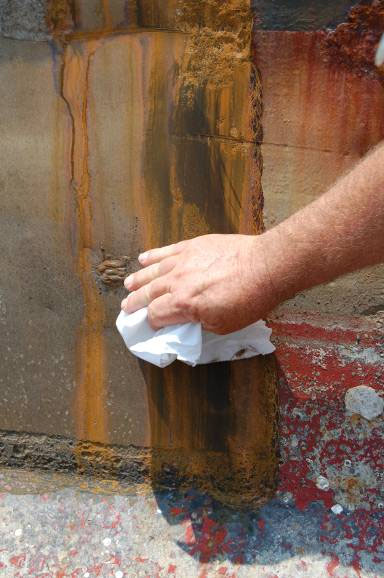Slurry blasting and surfaces.
This slurry material is forced through the blast hose to the nozzle using compressed air, similar to the method used to move dry abrasive through hoses in conventional abrasive blasting operations.
However, the Torbo® system allows the blast operator to control the following directly at the nozzle: abrasive mixture quantity, air pressure and nozzle on/off.
The use of this slurry media reduces airborne dust, which could possibly reduce the containment requirements compared to dry abrasive blasting.
The depth of the profile is dependent on the size and type of abrasive used as well as the air pressure.
A wide variety of abrasives may be used such as sand, plastic, glass, slag, bicarbonates and other manmade abrasives.
The contractor performing the work was PbX and consisted of a crew of five men: one foreman, two blasters, and two helpers.
This was done using the Torbo® Wet Abrasive Blasting System, which allowed the blasters to turn off the abrasive and use only low-pressure fresh water.
The abrasive admixture is a proprietary additive used to render lead in waste nonleachable.
For the I-40 bridge painting project, abrasive consumption was reduced from an assumed average of 10 lb/ft2 for once-through dry abrasive blasting to 3 lb/ft2, a 70% decrease.
VII: The Use of Admixture Blended Abrasives and Liquid Applied Pretreatments in the Removal of Lead-Based Paint, Corrpro Companies, Inc.
To compare the two surface preparation technologies, a cost model built for this FHWA study was used.
[Download not found]











April 5, 2009
Main Library